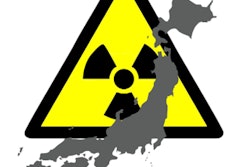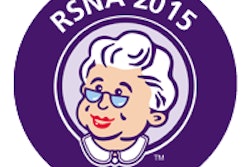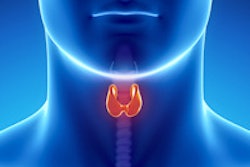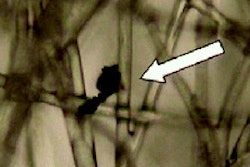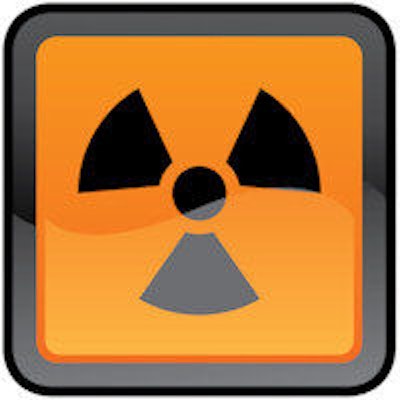
Just as many had feared, the disaster at the Fukushima Daiichi nuclear power plant in March 2011 has sparked a sharp increase in thyroid cancer among children and adolescents in the area, according to a study published online in Epidemiology. And more cases may be lurking.
One particularly hard-hit district in the Fukushima Prefecture saw thyroid cancer rates that were 50 times higher than the national average in Japan among those 18 and younger, reported researchers who participated in a thyroid ultrasound screening program in the three years after the earthquake. Cancer rates throughout the prefecture are 30 times higher than in Japan as a whole.
"The result was unlikely to be fully explained by the screening effect," wrote the research team led by Dr. Toshihide Tsuda, PhD, of Okayama University. "In Chernobyl, excesses of thyroid cancer became more remarkable four or five years after the accident in Belarus and Ukraine, so the observed excess alerts us to prepare for more potential cases within a few years."
Radiation exposure
Following the meltdown of three Fukushima nuclear reactors, approximately 900 petabecquerel of radiation was released into the atmosphere, the radiological equivalent of one-sixth of the 5,200 petabecquerel released by the Chernobyl disaster. Based on its preliminary dose estimation in 2012, the World Health Organization (WHO) predicted there would be an increase in thyroid cancers among children who had been exposed to the radiation.
WHO estimated that those in the most affected areas of the prefecture received thyroid-equivalent doses of 100-200 mSv, while those in the rest of the prefecture received 10-100 mSv via inhalation, ingestion, and external exposure from fallout deposits on the ground, according to the researchers (Epidemiology, October 5).
Nearly four years after the accident, the group sought to determine accurate and quantitative estimates from the Fukushima experience to plan for the population's future health needs.
Thyroid ultrasound screening
Under a screening program planned and conducted by the government of the Fukushima Prefecture, all residents 18 years or younger received thyroid ultrasound screening sometime during the 2011-2013 fiscal years. Screening was performed in three areas: in 2011 in the area nearest the disaster, mostly within 50 km of the Fukushima plant; in 2012 in a middle area of the prefecture; and in 2013 in the least-contaminated area.
A second round of screening, which will also include residents born in the prefecture between April 2, 2011, and April 1, 2012, began in April 2014 and is expected to be completed in March 2016.
Those with positive ultrasound findings on screening received a secondary exam, followed by fine needle aspiration (FNA) biopsy if necessary. Patients with detected cancer cells were followed and operated on at an appropriate time, according to the researchers.
Of the 367,687 residents 18 years or younger in the prefecture in 2011, 298,577 (81%) had received the first round of screening by the end of December 2014. There were 2,251 positive thyroid ultrasound cases by 2014 and 2,067 received a secondary exam.
From these, FNA indicated the presence of 110 thyroid cancers, 87 of which had been operated on by the end of 2014. On histological examination, 86 were confirmed to be malignant, a number that included 83 papillary carcinomas and three poorly differentiated carcinomas.
The researchers compared the prevalence of thyroid cancer for each area by calculating a prevalence odds ratio in comparison with the least-contaminated district of the least-contaminated area of the prefecture. For a comparison with subjects outside of the prefecture, the team calculated incidence rate ratios in comparison with annual incidence rates nationwide in Japan, taking into account the prevalence as well as the latent duration (four years) of the disease.
| Thyroid cancer prevalence | |||
| Area | Prevalence of thyroid cancer per 1 million people | Prevalence odds ratio compared to least-contaminated district | Incidence odds ratio compared to Japan national rates |
| Nearest to Fukushima | 359 | 1.5 | 30 |
| Middle -- not evacuated | 402 | 1.7 | 33 |
| Least contaminated | 332 | N/A | 28 |
The researchers noted that the highest incidence odds ratio (50; 95% confidence interval: 25-90) in comparison with the mean Japanese annual incidence of thyroid cancer was found in the middle area's central middle district -- 50 to 60 km west of the power plant -- where residents were not evacuated. That district had a prevalence rate of 605/1,000,000 (95% confidence interval: 302-1,082) and a prevalence odds ratio in comparison with the least-contaminated district of 2.6 (95% confidence interval: 0.99-7.0).
The finding that southernmost districts within the middle and the least-contaminated areas of the prefecture had higher incidence rates than the northernmost districts was consistent with the flow of indium-131 being primarily in a southern direction from the Fukushima release.
2nd round of screening
In the second screening round that began in 2014, 106,068 (49%) of 218,397 total subjects have been screened so far. Of the 71% of exams with a decision as to whether the secondary exam was necessary or not, there were 611 positive studies.
The secondary exam has been performed on 377 subjects (62% of the positive studies), and 262 received a final diagnosis on the secondary exam. FNA was performed on 22 subjects (8%) and detected eight new thyroid cancer cases by cytology as of December 31, 2014. All eight had negative ultrasound findings in their first round of screening.
New data released in May 2015 added two additional thyroid cancer cases from the first round of screening and seven more cases from the second round (for a total of 15). As a result, the incidence ratio so far from the second round of screening is 13.7 (95% confidence interval: 7.7-23).
The authors concluded that within as few as four years after the disaster, there has been an approximately 30-fold increase in thyroid cancer among children and adolescents in the Fukushima Prefecture. As the number of thyroid cancer cases has increased faster than predicted by the WHO, it's possible that the organization's previous exposure estimates for residents were too low, according to the group.




